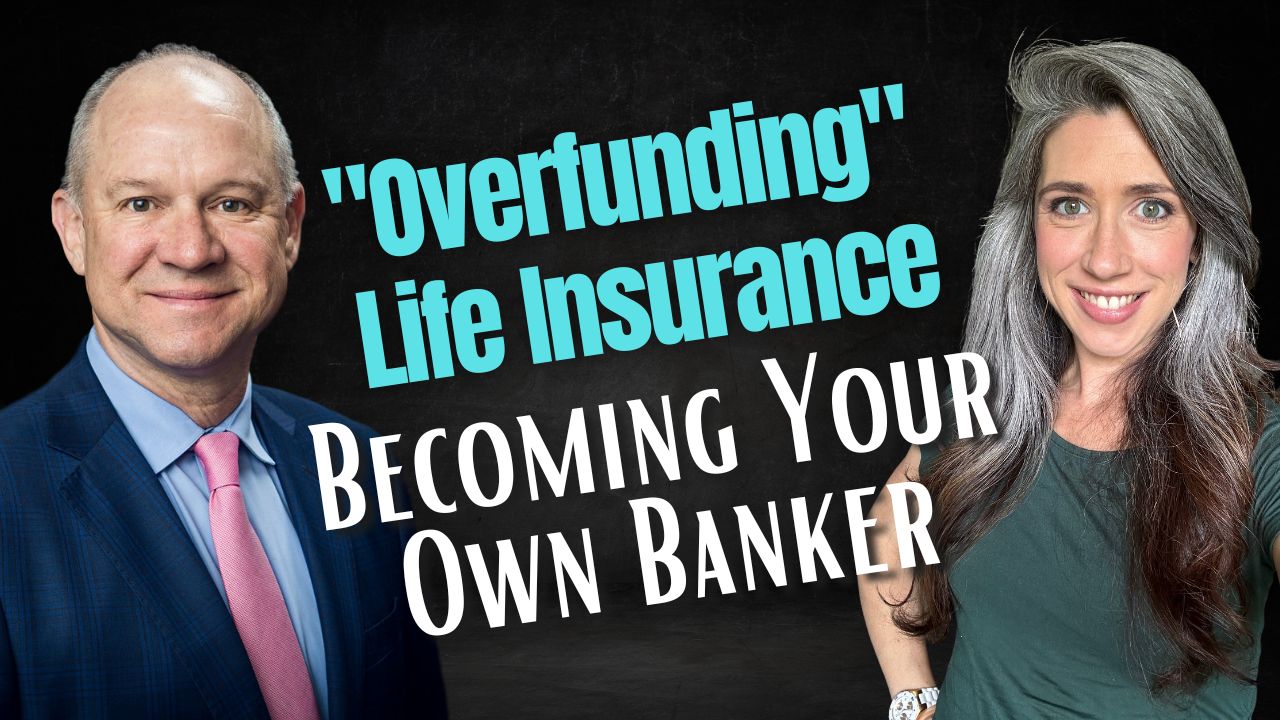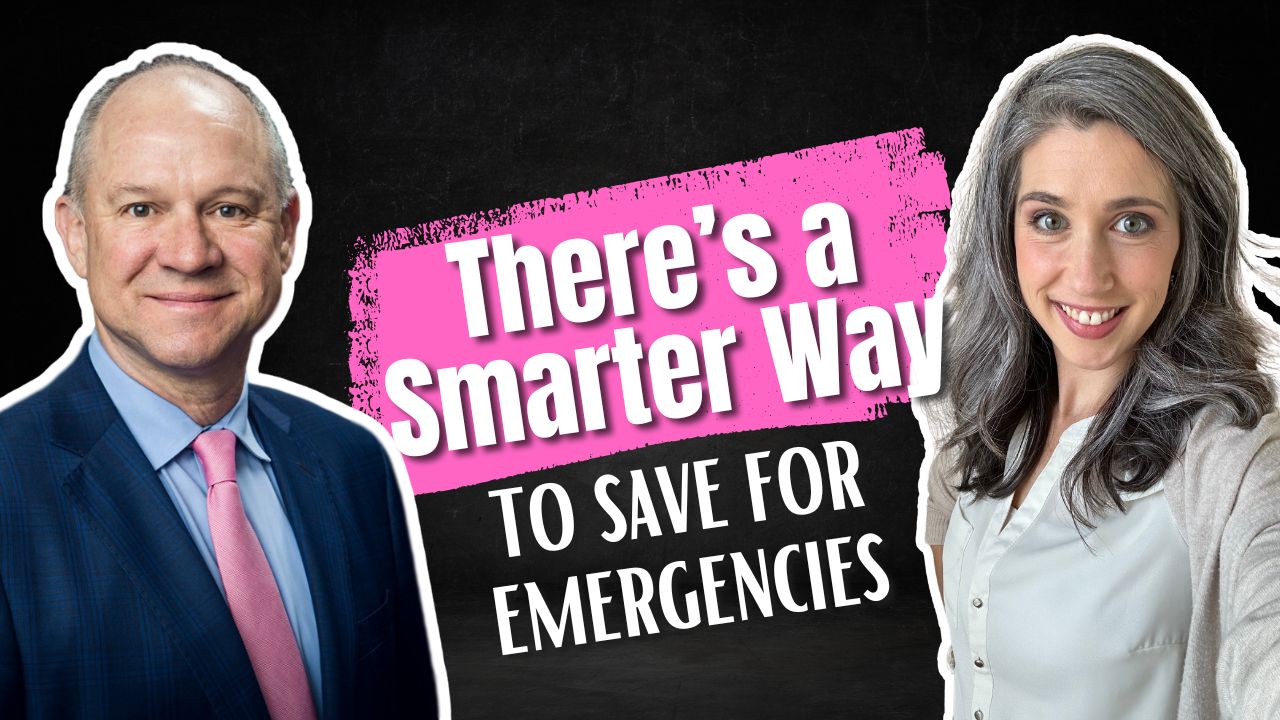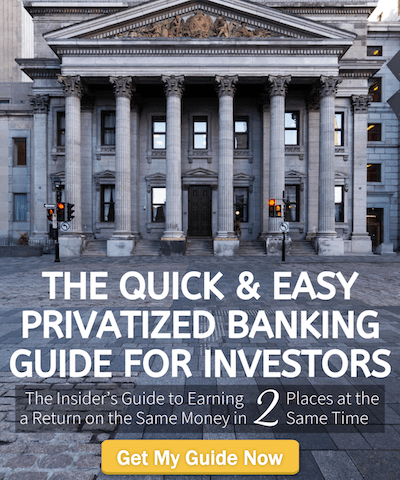
How Overfunding Life Insurance Boosts Your Wealth-Building Strategy
Prepare to unravel the mystique behind funding and overfunding life insurance, and the empowering concept of becoming your own banker. This episode holds the key to understanding how to fund a life insurance policy, maximize its cash value, and reap the benefits. Our human-centric approach puts you, the listener, at the forefront as we examine how to expand your contract and build additional ones to create your own holistic financial system.
We dive right into the heart of constructing a life insurance contract that prioritizes both cash value and death benefit maximization. We lay bare the intricacies of balancing ordinary life, term, and single premium contract components, aiming to achieve the optimal cash value to death benefit ratio. We also confront the challenges of adding a single premium paid-up addition to a contract and the complications that arise when human life value is exceeded, all in the pursuit of financial freedom and security.
Lastly, we explore the evolution of universal life insurance over the past quarter-century, with a special focus on its transformation following the 2001 stock market crash. We scrutinize the allure of universal life, index universal life, and variable universal life, revealing their potential pitfalls and unpredictability.
Before we sign off, we arm you with a list of recommended readings to further your understanding. Included is Nelson Nash’s enlightening book, Becoming Your Own Banker, as we champion the importance of financial literacy and independence.
Join us for this insightful look at overfunding life insurance, infinite banking, and gaining financial control!
Podcast: Play in new window | Download (Duration: 1:12:35 — 83.1MB)
Subscribe: Apple Podcasts | Spotify | Android | Pandora | Youtube Music | RSS | More
Table of Contents
Why “Overfunding Life Insurance” Isn’t Technically Accurate
You may hear the phrase “overfunded life insurance” used a lot—especially in conversations about Infinite Banking or high cash value strategies. It’s catchy. But it’s also misleading.
The truth is, life insurance policies don’t have a “maximum” like most people assume. What they do have are funding limits set by the IRS. These limits determine whether a policy maintains its tax-advantaged treatment—or becomes a Modified Endowment Contract (MEC), which changes how the money inside the policy is taxed and accessed.
So when people say “overfunded,” what they usually mean is:
“Efficiently max-funded—up to the IRS limit—without triggering a MEC.”
In reality, a well-structured policy is:
- Intentionally designed for both early liquidity and long-term growth
- Compliant with tax rules, so it retains all the advantages of life insurance
- Strategically aligned with your goals—not just throwing money at a contract
This isn’t about cramming in as much as possible. It’s about funding with wisdom—within the rules, and with a long view toward legacy.
Why “Overfunding” Misses the Heart of Infinite Banking
The deeper issue with the term “overfunding” isn’t just technical—it’s philosophical.
Too often, the word leaves people believing that high early cash value is the point of Infinite Banking. But that’s not what the concept is about. Not even close.
Infinite Banking is a long-term, generational strategy based on ownership, discipline, and control. It’s about building a system that expands opportunity and multiplies wealth over time—not extracting value as quickly as possible.
If you truly understand the principles of IBC, you’re not aiming to “overfund.” You’re aiming to optimally fund—in a way that matches your current cash flow, future opportunities, and the expansion of your system over time.
That means designing a policy with the right balance of:
- Base premium, which builds lasting strength
- Paid-Up Additions (PUAs) for flexibility and early access
- And a death benefit that grows as your system grows
A policy designed this way won’t just solve for today. It will support the future you’re building—without limiting your ability to grow, invest, or bless the next generation.Because Infinite Banking isn’t about squeezing cash out of a contract.
It’s about designing a strategy that works—for your life, your legacy, and the generations to come.
The Importance of Policy Design
When you’re designing a policy, it’s easy to think that the best possible design is to have the lowest premiums relative to your death benefit. However, that’s not strictly true with life insurance. An overfunded life insurance policy gives you more cash value growth. And so in most cases, you want to cozy up as close to the MEC limit as possible. At the very least, you want to aim for that.
However, you also have to consider your priorities. Do you want to prioritize a higher death benefit in the early years or higher cash value? This is going to depend on what assets you already have, most likely. But once you know the answer, you’ll know whether you want to maximize PUAs or not, and toe that MEC limit.
The reason “base” premium doesn’t toe that MEC line is simply because it’s pure equity in the death benefit. Actuaries do a great job of calculating exactly how much you need to pay for your cash value to equal your death benefit at endowment. PUAs, on the other hand, are considered extra and incrementally raise both the death benefit and the cash value.
[19:34] “The longer you pay into the contract, the more cash value you have compared to death benefit.”
Benefits of Overfunding a Life Insurance Policy
When structured well, overfunding life insurance gives you more than just numbers on a spreadsheet. It’s a way to build a financial system that works with you, not against you. By maximizing paid-up additions, you increase early cash value, so you have liquidity when you need it, without interrupting the growth.
An overfunded life insurance policy lets your capital stay in motion, giving you access to tax advantages, stable compound growth, and the kind of long-term control traditional financial tools don’t offer. You’re not just funding a policy; you are designing a tool that serves your future, your family, and your freedom.
How Long Should You Fund a Policy?
Another factor of overfunding life insurance is how long you pay into a policy. The MEC limits on a policy are about early-year funding. In other words, they don’t want you funding a policy in a single year. These MEC limits apply to the first seven years of policy ownership.
So, in general, you’ve got to toe the line for the first seven years. What about after that? How long can you pay for a policy, and how long should you? This is another critical facet of policy design that can get confusing fast.
If you’re using a policy to create your own banking function, however, you probably want to overfund life insurance by funding your policy for as long as possible. Remember, the longer you fund it, the more it grows and the more it CAN grow thanks to compound interest. This is something you want to decide when your agent is drawing up illustrations for you to look at, as it contributes to your base premium “cost.”
What if You Want to Shorten Your Payment Window?
While a long payment window allows you to overfund your life insurance policy for as long as possible, you might still find that you’d prefer a shorter payment window. Or maybe you want to shorten your payment window retroactively. Let’s explore those funding options.
If you know you want a short payment window before you buy your policy, you can do a 10-pay. This means you pay premiums for only 10 years. While this can increase your early cash value, it will also pull down the amount of death benefit you can purchase.
The problem is that you can’t decide after 10 years to overfund the life insurance. While the cash value will continue to grow even after the funding period, you’ll lose volume of interest in the later years.
Instead, you could design a policy with the proper amount of Base and PUA premiums so that you have the option to pay base-only if you want. You can also do something called a reduced-paid-up.
What is Reduced-Paid-Up?
If you have a life insurance policy and decide that you want to stop paying premiums, there’s a possibility you can do a reduced-paid-up contract. The insurance company will look at how much you’ve already paid into the policy and adjust the death benefit according to your age and what you’ve paid. At this point, your premiums stop completely.
You cannot reverse this decision, so it’s not something to choose lightly. However, if you have some convertible term insurance and you decide you want to increase your liquidity, you can convert and start paying whole life premiums on that policy.
Real-Life Results
Marcus came to us in 2019 looking for a smarter way to protect his family, grow his capital, and invest in real estate. Since then, he’s used his whole life insurance policy as a financial foundation to launch multiple ventures, without relying on banks.
Here’s how he’s put his policy to work:
-
Real Estate Flips
Marcus borrowed against his cash value to fund two profitable fix-and-flips. “We used it to pick up the property and make the repairs… then flipped it. Paid the loan back as soon as the equity came in.” -
Collateral for an SBA Loan
He secured an SBA loan for his Hotworx fitness franchise using his policy’s death benefit as collateral, without touching the cash. “They didn’t access my cash value… they collateralized the death benefit. It got us where we needed to go.” -
Family Vehicle + New Business
With a policy loan, Marcus bought a car for his wife and funded the franchise fee for Destination Athlete, a sports apparel company he and his wife now run together.
“We pulled out all of it… used it for a vehicle and to start our second business.” -
Disciplined Payback = Reusability
Marcus repays each loan with discipline, giving him access to capital again and again.
“Once it’s paid back, I reuse it. I treat it like a real bank—with my own terms.”
For Marcus, whole life insurance isn’t just protection. It’s his business capital, legacy plan, and financial peace of mind—all in one.
Building a Family Banking System That Lasts
Nnene, a former nurse turned real estate investor and financial strategist, used Infinite Banking to create a wealth-building system that serves her family today—and secures their future.
Here’s how she’s putting her policies to work:
-
Funded Through Income Increases
Nnene used policy loans to manage cash flow and reinvest during income surges. “I was making $150K to $250K… the policy became a way to keep that money in motion instead of just saving it in a bank.” -
Used for Business Investments
She pulled from her cash value to fund her Airbnb business and real estate transactions. “My first loan from the policy was for an Airbnb business investment. It was fast and easy.” -
Real Estate Acquisitions
Nnene used policy loans for earnest money and down payments on real estate deals. “It let me move quickly on deals, then I’d refinance or flip to pay it back.” -
Teaching Her Kids Financial Literacy
Each of her three children now has their own policy, and she’s teaching them how to use it for future business or education goals. “My 18-year-old now has her own policy. She’s learning how to use it and pay it back.” -
Designed for Long-Term Use
Nnene is building a family system where policies are tools for access, control, and impact. “It’s not just insurance. It’s a family banking system for freedom, flexibility, and legacy.”
From cash flow strategy to family empowerment, Nnene proves Infinite Banking isn’t just smart finance – it’s multigenerational leadership in action.”
Book A Strategy Call
Do you want to coordinate your finances so that everything works together to improve your life today, accelerate time and money freedom, and leave the greatest legacy? We can help!
Book an introductory call with our team today to learn how privatized banking, alternative investments, or cash flow strategies can help you accomplish your goals better and faster.
That being said, if you want to find out more about how privatized banking gives you the most safety, liquidity, and growth… plus boosts your investment returns, read our free guide to find out more and guarantee a legacy.
Emergency Fund Alternatives: Liquidity That Protects Your Family—Without Sacrificing Growth
The Day the “Emergency Fund” Met Real Life Rachel here. Many tell us the same story: “I saved the emergency fund, but I’m worried I’m losing ground to inflation and missed opportunities.” Because for most people, the “emergency fund” is a lonely pile of cash—stuck in a corner doing next to nothing. It feels safe,…
Read MoreIndexed Universal Life Lawsuit: Kyle Busch vs Pacific Life—and the Lessons Every Family Needs
Why the Indexed Universal Life lawsuit is a wake-up call The headlines about the Kyle Busch vs Pacific Life indexed universal life lawsuit sparked the same question I hear from thoughtful families: is my policy designed to serve me, or to serve a sales incentive? This isn’t tabloid noise. It’s a real-world reminder that choices…
Read More



